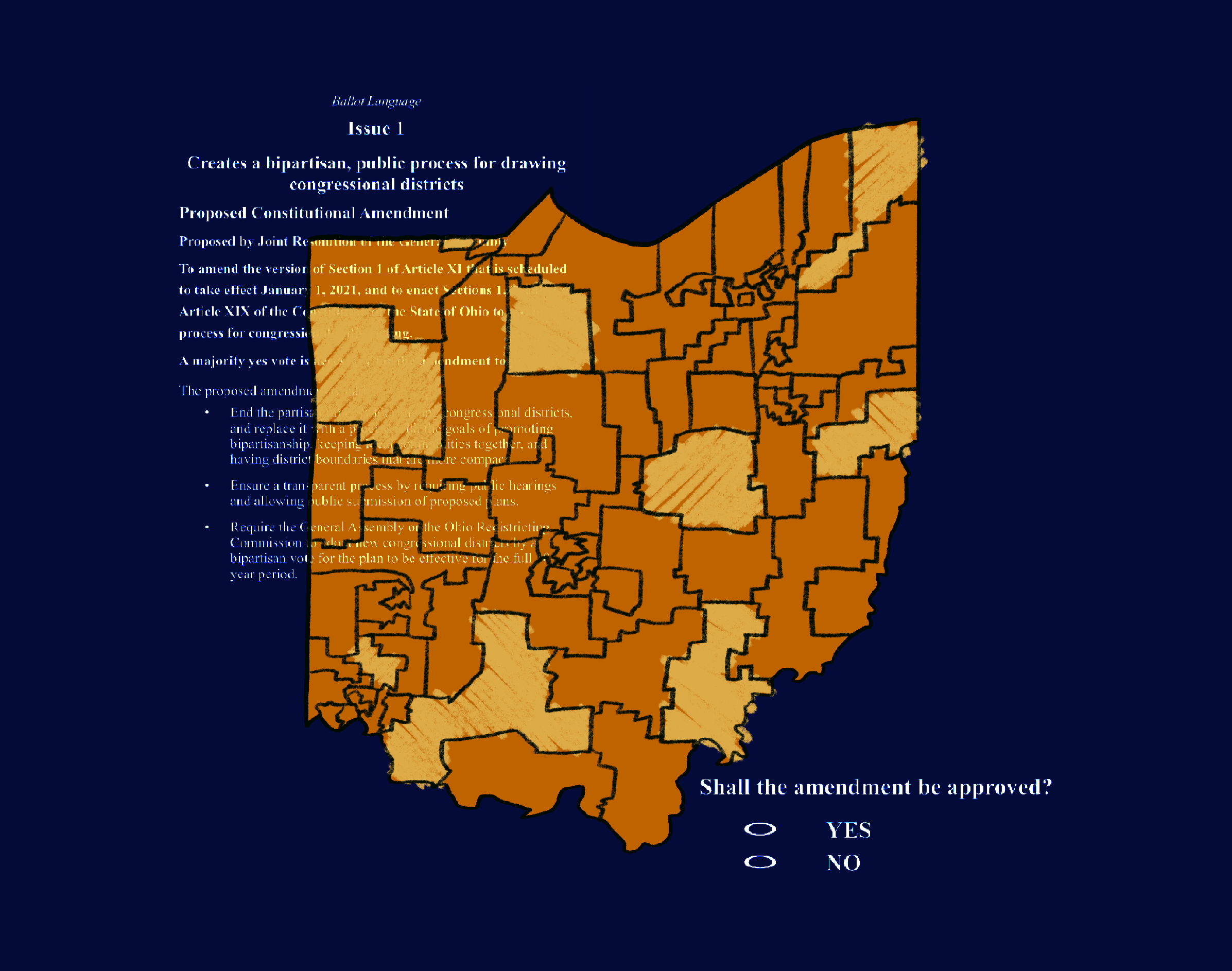
Amelia Crowley
Contributing Writer
On Tuesday, Sept. 17, the League of Women Voters held an event titled “The Fight to End Gerrymandering.” The event was held in Gault Recital Hall in Scheide Music Center.
The main speaker at the event was former Judge Maureen O’Connor. O’Connor was the first female chief justice of the Supreme Court of Ohio, Ohio Lieutenant Governor and the original Ohio liaison to the Department of Homeland Security. She received the Ohio Bar Medal in 2019 for her outstanding service to upholding Ohio law.
O’Connor started her speech by expressing how impressed she was with the turnout. “What that means to me is that you are going to be the ambassadors for this message, that you’re interested in redistricting, you’re interested in what’s on the ballot this November here in Ohio,” she said, imploring people to talk with their friends, family and others in their community about Ohio Issue 1. If passed, Ohio Issue 1 will remove politicians from the redistricting process — it aims to ban gerrymandering in Ohio.
“Gerrymandering is not new. It’s not only in Ohio, it’s not only Republicans, and it’s not only Democrats,” O’Connor said. “Gerrymandering is an equal-opportunity offender.”
According to O’Connor, the aim of gerrymandering is to give an unequal advantage to one political party over another through redrawing district lines so that a favorable outcome is achieved for that party. O’Connor mentioned that Ohio is one of the most gerrymandered states, alongside North Carolina, Pennsylvania and Texas. “Not everyone’s vote matters in a gerrymandered district,” she said.
O’Connor also said that some of the language used on the ballot may be confusing. While most issues constituents vote on consist of a few bullet points or a paragraph, Ohio Issue 1 this year will consist of several pages of legal jargon.
O’Connor also outlined what would happen should Issue 1 be passed. This includes the public selection of a redistricting committee. The committee must represent Ohio geographically and demographically, and members cannot be politicians or lobbyists. It would also be nonpartisan, made up of five Democrats, five Republicans and five Independents, whose interviews would be televised for all Ohio citizens to watch. Maps of new districts would then be drawn by professional cartographers advised by the commission.
The cost listed in the amendment for this commission is $7 million. While this cost might seem high, O’Connor insisted that it would not actually end up being very expensive.
After the lecture was over, people milled about in the lobby enjoying donuts and apple cider courtesy of the League of Women Voters. Among them was College of Wooster student Nathan Ware ’28, who said that it would be his first time voting in the U.S. and that he wanted to be informed on the issues at hand.
Ware said that as a global nomad, he had “observed the political life in the States, and [wanted] to start getting into the political atmosphere.”
